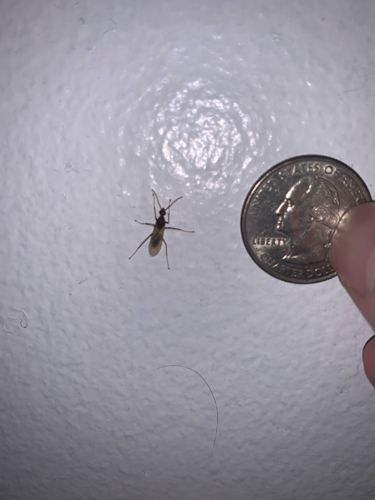Non-biting Midge
Scientific Name: Chironomidae (family)
Order & Family: Order: Diptera, Family: Chironomidae
Size: Typically 1 to 10 mm in length, sometimes up to 15 mm.

Natural Habitat
Adult midges are found near bodies of water (lakes, ponds, rivers, marshes) where their larvae develop. They can also be found indoors, attracted to lights.
Diet & Feeding
Adults generally do not feed, or they may feed on nectar and other sugary plant secretions. Larvae are detritivores, feeding on organic debris in aquatic environments.
Behavior Patterns
Males typically form swarms, especially at dusk, which females fly into for mating. Larvae are aquatic and feed on organic matter. Adults are generally weak fliers and have short lifespans.
Risks & Benefits
Non-biting midges are generally harmless to humans as they do not bite or transmit diseases. However, large swarms can be a nuisance, especially near water bodies. Their larvae are an important part of aquatic food webs, serving as food for fish and other aquatic animals. They also play a role in nutrient cycling in aquatic ecosystems.
Identified on: 8/17/2025